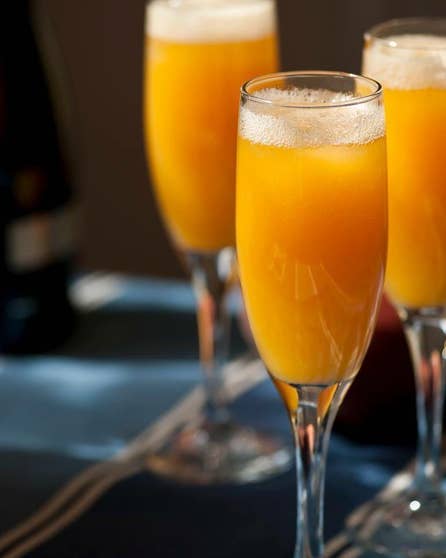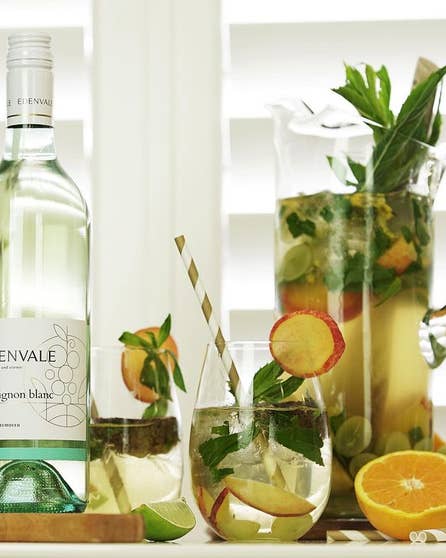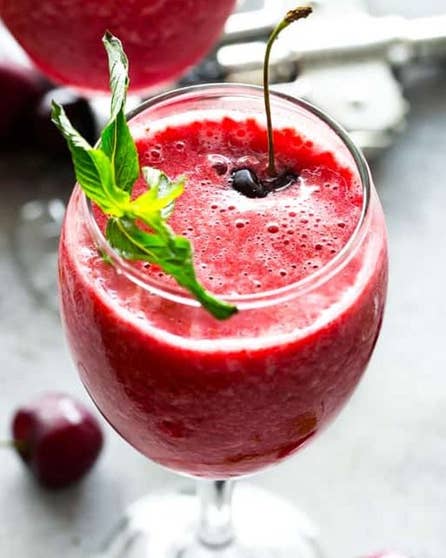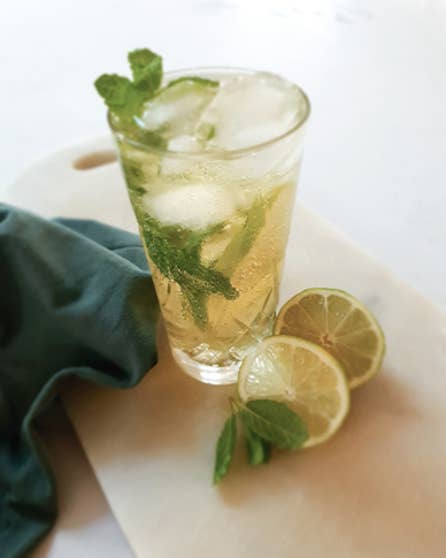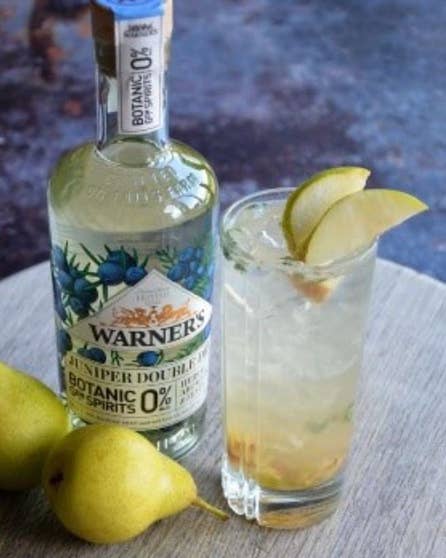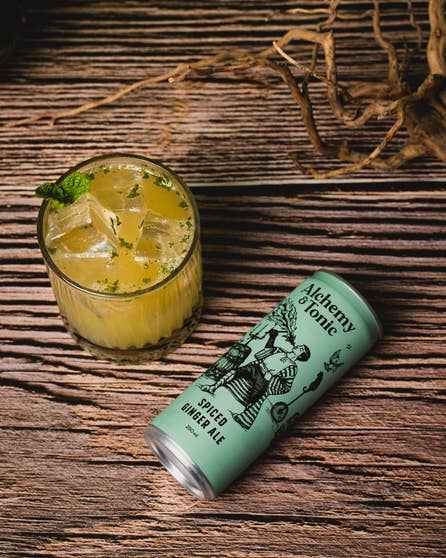Zero Zone - non-alcoholic drinks
Our wide range of drinks and recipes under 0.5% alcohol by volume have you sorted.
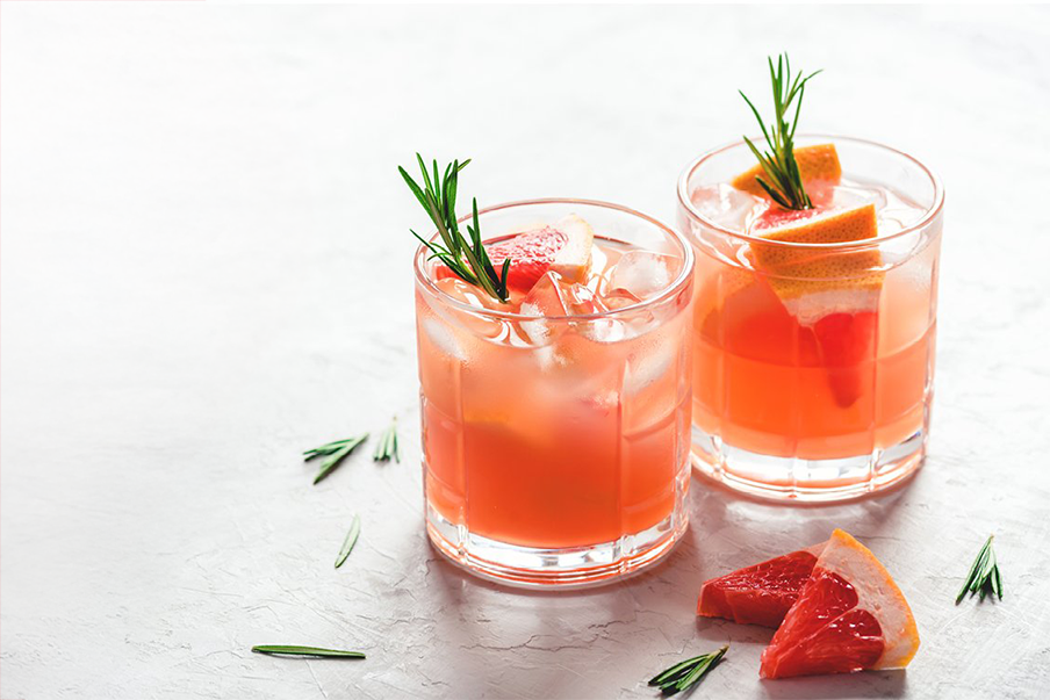
Welcome to the Zero Zone
If you’re looking for adult alternatives to soft drinks, juice or sparkling water. If you always thought zero alcohol beer tasted like malty water. If you believe zero alcohol wine was just grape juice by another name or that zero percent cider was nothing more than hyped-up apple juice. Or if you wanted an alcohol-free cocktail that treated you like a grown up. Then you’re in the right place.
Michael Donaldson, journalist, author and beer writer, Chair of Judges for the New World Beer & Cider Awards explores the new and exciting world of zero alcohol wine, beer and spirits.
Delicious alcohol-free drinks to try
Finery Grapefruit Cucumber & Mint 0% Alcohol Free Sparkling Cocktail Cans
4 x 250ml
13.
49
$13.49/1L
Limit 12 assorted
1 / 0
Easy to mix, even easier to enjoy - non-alcoholic cocktails you'll love
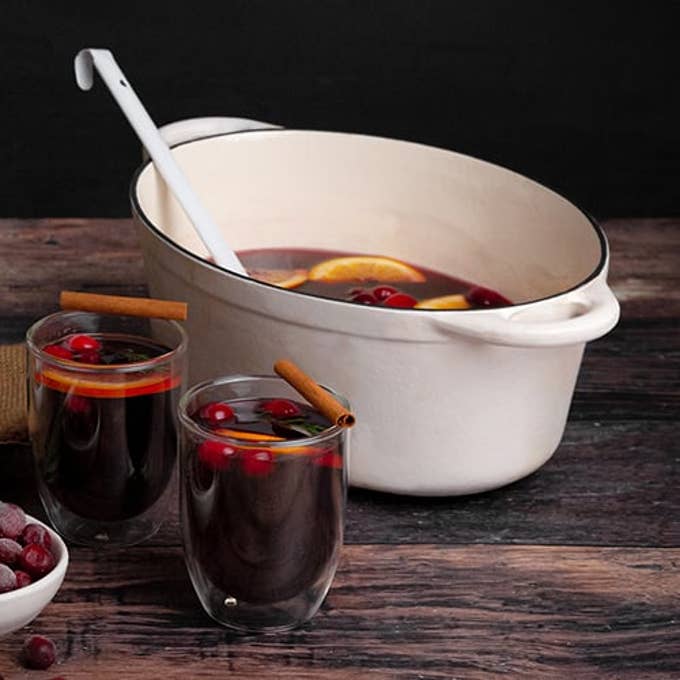
Alcohol free mulled wine
Create the ultimate cosy night in with alcohol free mulled wine. This simple, ruby-red recipe is enhanced with flavourful mulling spices to create the perfect winter treat! Just sip back and relax.
Serves 6
35 mins
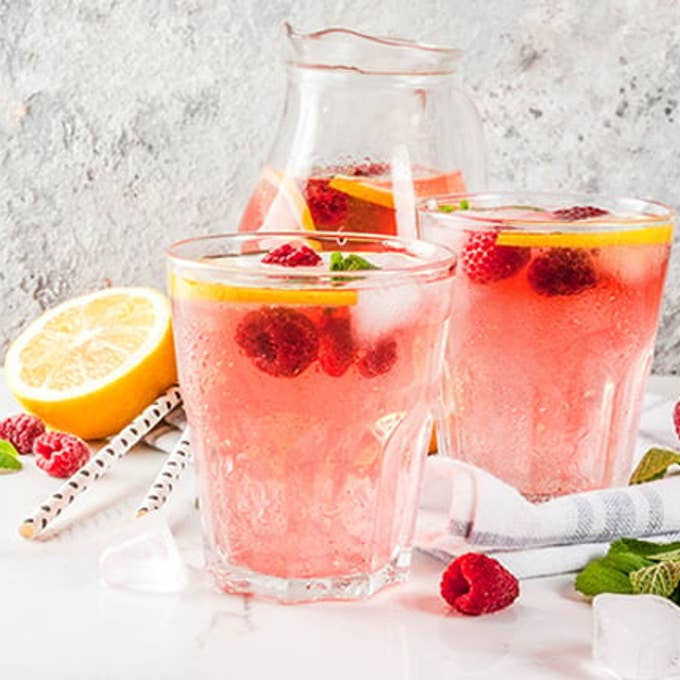
Alcohol free rosé spritz
The perfect complement to smoked or fresh salmon.
Serves 1
5 mins
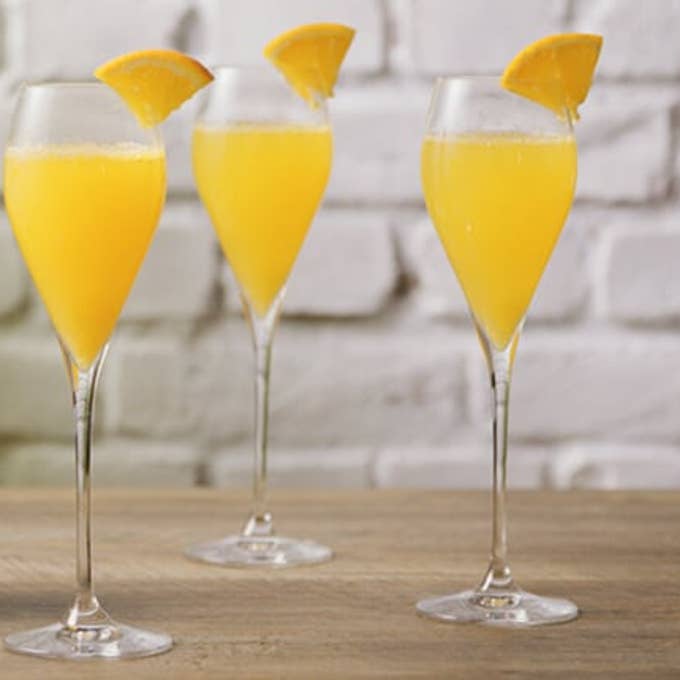
Alcohol free grapefruit mimosa
Is there a more quintessential brunch cocktail? A bubbly way to start to any proper Sunday morning (or afternoon)!
Serves 1
5 mins

Alcohol free elderflower spritz
Cool off with this light and refreshing zero alcohol elderflower spritz.
Serves 1
5 mins
1 / 0
What is Zero ABV anyway?
By law in New Zealand, low alcohol means less than 1.15% ABV.
That might sound like a lot but the crazy thing in life is that lots of things contain alcohol without us knowing … including, right now, you!
Curious Alcohol Fact: The human body produces alcohol, 24/7. That’s right. The food you eat has sugar in it and through the process of digestion some of that sugar is turned into ethanol. It’s only a small amount, around 3-4g per day or the equivalent of ¼ of a standard drink.
Ripe fruit can produce alcohol. A very ripe banana, for instance, can be about 0.4% alcohol by volume.
Vanilla Extract is a classic “I bet you didn’t know that” product. It contains at least 35 per cent alcohol (in America, by law it must contain that amount at a minimum!). It’s just when you use vanilla extract, it’s usually in baking and the alcohol burns off … but if you’re sweetening your cream with vanilla, it’s going to have some alcohol in it, though admittedly very little.
Kombucha is another one. This on-trend drink is a fermented product. When these are sold as soft drinks, by law they have to be under that 1.15 percent ABV – which if you drink a 330ml means you’ll consume a third of a standard drink.
Breath freshener strips are another source of small amounts of alcohol.
Alcohol is part of life – whether we like it or not. But increasingly we’re all becoming aware that a little less alcohol in our personal lives is a good thing.
A few years ago, to make these kinds of choices – well, we didn’t have that many choices. If you were the designated driver it could mean a long and slightly lonely night drinking water or an overly sugared juice or soft drink.
And when the zero per cent products came on the market, it’s fair to say some of them tasted less than amazing.
The good news is that changing consumer trends and technology are moving in step – as demand for zero alcohol products increases so does the creativity of manufacturers.
In terms of choice it’s a great time to be alive. We’ll look at some of the huge range of products you can enjoy with zero fear but first come over the laboratory, we have a science lesson.
How do they make non-alcoholic beer?
Method 1: Removing alcohol from the beer
Beer traditionally uses two common alcohol removal methods: vacuum distillation or reverse osmosis. In more basic terms: this means heating or filtering to remove alcohol and both methods affect the flavour.
Vacuum distillation
During vacuum distillation, beer is heated so the alcohol evaporates out. The vacuum means the beer has to be warmed to around 33°C instead of 80°C which helps preserve aromatics and flavour. But still, warm beer? It does result in an inferior taste.
Reverse osmosis
Reverse osmosis operates like a kidney dialysis machine: beer is pushed through a filter with microscopic pores where alcohol molecules and water are separated.
Method 2: reducing the amount of alcohol to start with
A method for reducing the amount of alcohol to start with is arrested fermentation which is where brewers halt the fermentation process before too much alcohol can form. This is usually done by rapidly cooling down the beer to make the yeast go to sleep. This process allows some yeast-derived flavours to develop, and stops the beer tasting too much like “wort” (pronounced wert) the name we give to unfermented beer. Critics will often describe non-alcohol beers as tasting “worty” which means it’s more like a malty drink than beer.
One of the reasons the world has been slow to make really good zero alcohol beer is because these technologies are either quite expensive, so remain the domain of the big global brands, or just very difficult to get right.
Historically to remove the alcohol without altering the taste is incredibly hard. Even a low heat can strip away flavour in the distillation model. Ditto super-filtration. And the arrested fermentation method means the beer doesn’t get to develop full flavours in the first place.
The one thing that drove big breweries to work harder in this area, was the rise of craft beer and its focus on flavour. The creativity and innovation of craft brewers has created a composite method of reducing alcohol.
How to make non alcoholic beer taste better
Most craft breweries prefer a “brew natural” method of creating non-alcohol beers. First they will choose grains that are slightly harder to ferment. These include speciality malts that contain long-chain sugars that are hard for yeast to break down. This helps creates a “beer” flavour and leaves residual sugar for mouthfeel and flavour. They will then choose a “low-attenuating” yeast — one that naturally ferments at a lower rate. Controlling the temperature at which things happen is another way to create flavour but reduce alcohol. Finally, hop selection and the methods for using hops can allow a brewery to create a lot of flavour without too much bitterness, plus hop oils can add weight to the body of the beer to help create the perception you are not just drinking flavoured water.
The brew natural method involves tweaks to around a dozen variables but done well it results in a great tasting beer.
What’s a good zero percent beer to try?
Picking a great alcohol-free option is both easier and harder these days. Easier because there are so many good options which means any fears of picking up a dud are greatly reduced. But it’s also harder because … there are so many good options!
Every year, the New World Beer & Cider Awards finds the best beers and ciders in the country and they’re as good a place as any to start your journey, with options ranging from a more mainstream lager offering right through to a super-hoppy craft-style non-alcoholic beer.
Zero alcohol cider
Cider is a great zero alcohol option and before you come up with the clever clogs assertion that it's "just apple juice", think again.
Cider works as a zero option because its typically lighter bodied to start with, and even with the removal of alcohol it maintains a bright acidity and distinctive flavour.
Why put alcohol in just to take it out?
Fermentation is an amazing thing, it not only converts sugars into alcohol but adds an array of flavours and compounds that enhance the experience. So producing an alcoholic beverage first and then removing the alcohol creates an entirely different product than just, for example, crushing grapes or apples into juice.
How do they make non-alcoholic wine?
Taking 5 percent alcohol out of beer is one thing – where a judicious use of grains such as oats and wheat, yeast character, as well as hop notes, can go a long way to covering the missing alcohol in beer.
But there are fewer places to hide with non-alcoholic wine. You’re taking out 12 or 13 percent alcohol, which is quite a lot of the wine’s character, and you can’t go filling it up with other “adjuncts” as you can with beer.
We won’t get too techy here, promise, but the past decade has seen huge advances in the science for reducing alcohol in beverages.
The Spinning Cone Column (SCC) is an Australian invention originally created to remove sulphur from wine. But like all good technologies, people soon found better and more widespread uses for it, like taking alcohol out of wine and cider.
SCC takes place in a vacuum which allows low temperature distillation in two stages. First the full alcohol wine is poured into the column and the spinning motion creates a thin film of liquid. At around 30°C the system captures the delicate aromatics of the wine and stores them. The liquid is passed through for a second time and alcohol is removed at a slightly higher temperature. The two captured batches of liquid are blended back together and voila, a zero alcohol beverage.
Research shows that not only does the technology retain flavour but in some cases enhances it, because it is no longer diluted by ethanol. In red wine for example, the Spinning Cone Column increases the concentration of resveratrol – the antioxidant found in grape skins.
Interesting techie fact: California wine-makers first used SCC technology to reduce the alcohol in their famed Zinfandel wines. In perfect weather these grapes produce lots of sugar, leading to super-high ABV and the vintners felt it disrupted the balance of the wine so they used SCC to take away around 2 percent of alcohol and bring the wine back into balance.
As an aside, those fastidious Europeans were less fond of this new technology and reduced alcohol wines made by this method were banned in the European Union for a number of years. Many critics will argue that wine without alcohol is not actually wine but the French go further and say wine has to be 8 percent ABV. Luckily, we’re all a little more free-thinking in this part of the world.
The beauty of the Spinning Cone Column is that the wine only reaches temperatures around 35-45°C and only for around 25 seconds so it’s not effected by the heat
Spinning cone columns are also used in making coffee and flavour essences.
Non-alcoholic spirits and cocktails
But wait, there’s more choice than ever
The idea of treating non-alcohol drinkers as real people with discerning palates is evident in the new range of zero alcohol spirits, cocktails, or RTD-type products from brands such as Seedlip, AF and Finery.
If you thought taking alcohol out of wine was hard, trying taking it out of a spirit!
Non-alcoholic cocktails to try
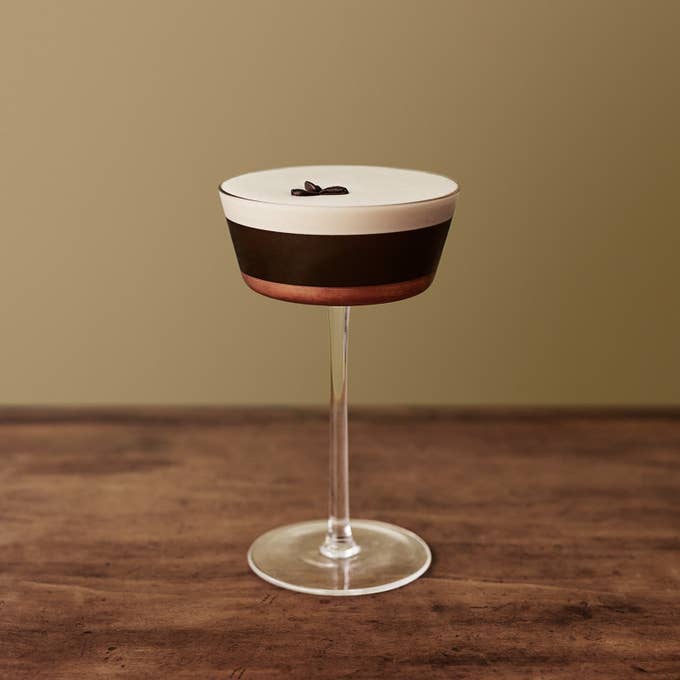
Alcohol free espresso martini
Try this alcohol free twist on the espresso martini. A coffee lover’s dream.
Serves 1
5 mins

Alcohol free cosmopolitan
Try this delicious alcohol free twist on the classic pink cosmopolitan cocktail.
Serves 1
5 mins
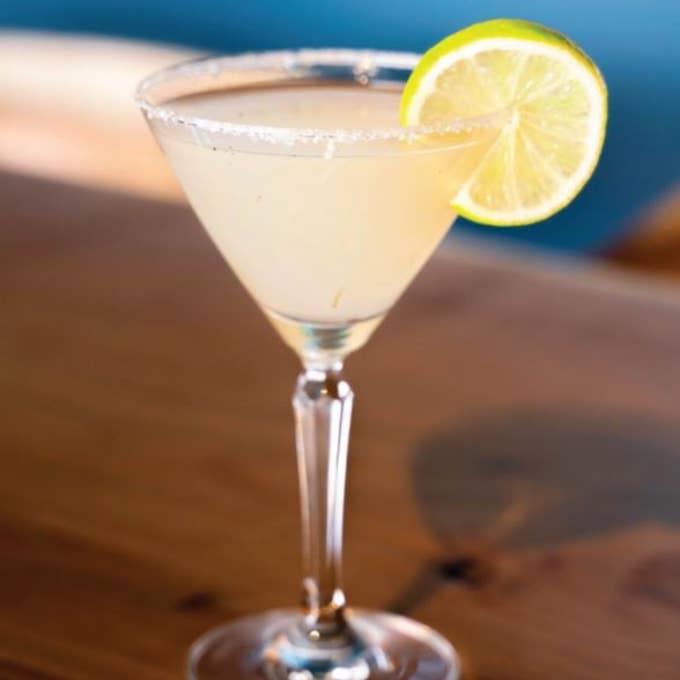
Alcohol free margarita
This alcohol free margarita is a perfectly balanced sweet and sour cocktail that will leave you feeling refreshed on a hot day.
Serves 1
5 mins
1 / 0
Why put alcohol in to start with?
That was the question that bugged Lisa King.
The woman behind the charity Eat My Lunch, loved to drink gin & tonic but when she decided to give up alcohol she was desperate to find something that tasted the same but without alcohol.
King stopped drinking at the start of 2020 and like so many others couldn’t find “anything good” to replace her fave G&T.
The non-alcohol market, she said, was “so poorly catered for”.
“At events if you’re drinking water, juice or a soft drink – you can’t hide from yourself that you’re having a kid’s drink.”
She wanted a drink she’d be “confident and happy to hold – that allows you to be part of that social occasion and not feel left out.”
AF
From there AF was born.
AF – which you might think means one thing – actually stands for Alcohol Free.
The unique quality of AF is that it’s made without alcohol from the get-go but yet it gives you the feeling of drinking alcohol.
As King notes, she couldn’t see the point of putting something in just to take it out later. So she figured there must be a way with modern flavour technology to replicate the alcohol vibe.
“It didn’t make sense to put something in there that you didn’t want.”
She’d worked with food companies in the past and was familiar with the world of flavours and felt sure she could create something that tasted like gin and tonic.
The trick was to recreate the depth and warmth that alcohol brings without bunging the drink full of sugar, which fattens the mouthfeel and the waistline.
They have created a bespoke, trade-marked heat extract called Afterglow.
“You can literally feel it rising up your face,” King says. “It gives you the sensation of having an alcoholic drink rather than flavoured sparkling water.”
AF started with a classic G&T and now has a cucumber G&T, pink grapefruit G&T, Cuba Libre and Dark & Stormy.
With some sharp branding, King says AF is about making not-drinking “normal, fun, sexy, aspirational”.
She says Kiwis “don’t need alcohol to have fun – it’s so ingrained in our culture”.
One of her other drivers is not to focus on tee-totallers but encourage people to moderate their drinking without giving it up altogether.
“I didn’t want to talk to people who’d already decided to stop drinking. I want to talk to people who chose not to drink every other day.”
What else is there for me to try?
Maybe the idea of non-alcoholic beer, wine or cocktails is just not you but still, you want something more than fizzy water or juice.
There are plenty of choices in this expanding market including the good-for-your-gut “living” fermented drinks such as kombucha and kefir which are low on sugar but full of probiotics.
Both of these drinks are fermented products made with Scoby which stands for “symbiotic culture of bacteria and yeast”. The fact these are fermented drinks makes them dry and refreshing and brings a complexity of flavour.
Where do I find this stuff?
Throughout New World stores you’ll start to find Zero Zone’s popping up with zero alcohol products grouped together.
Under New Zealand law, supermarkets have to operate what’s known as a Single Alcohol Area where all the alcohol products are displayed. But stores can choose to display beer, wine and mead marketed as “Zero” and containing less 0.5% ABV or less either inside or outside of the Single Alcohol Area.
However other products such as the alcohol-free spirits and premixed cocktails such as AF, Finery, Seedlip, Ecology, Lyres and others cannot be displayed in the Single Alcohol Area, as they’re not subject to the Sale and Supply of Alcohol Act 2012.
Confused? Look for the Zero Zone signage and products highlighted as ‘Low Alcohol’ on our shelves. You can also shop online for our Zero Zone low alcohol drinks.
Related articles:





















